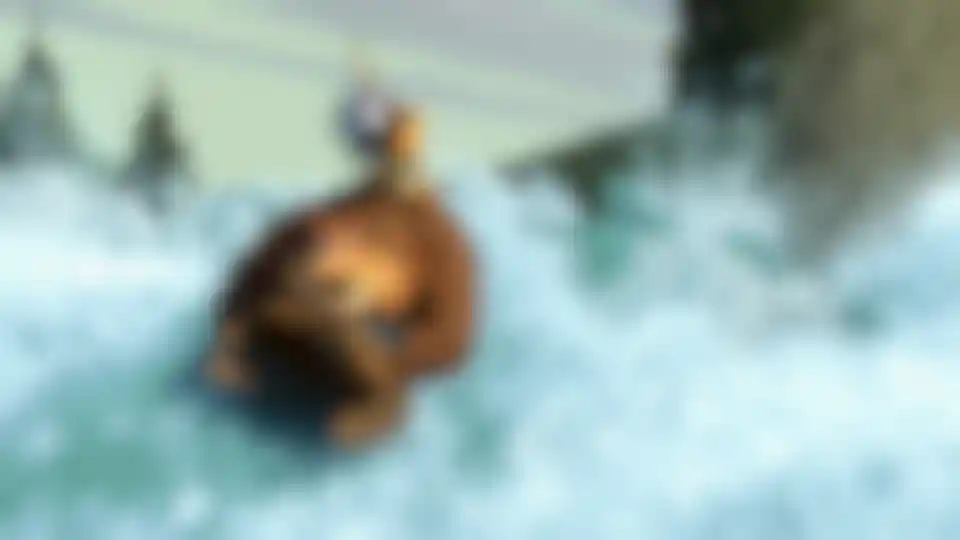
Sony Pictures Animation's Open Season Paves a New Way for Imageworks' Paint Artists to Work Together In Open Season, Martin Lawrence is the voice of Boog, a 900-pound domesticated grizzly bear who is released into the woods three days before the start of hunting season.
Boog must rely on a fast-talking mule deer named Elliot, played by Ashton Kutcher, and a host of woodland animals to survive.
We had a chance to sit down with Apryl Knobbe, lead paint artist on Open Season, to find out how Maxon Cinema 4D helped her and the other paint artists achieve such winning results.
CG artists are only part of the vast crew responsible for making an animated film like Open Season. Apryl explains the role of her department: "We are the link between the 2D artists and the art directors, taking the art directors' art work and interpreting it in the 3D space, and making it match the 3D elements in the scene. We take their ideas and bring them into the digital arena. In texturing and digital paint, we covered everything from a simple cup on a desk to the major characters in a scene, and with matte painting created complete scenic backgrounds."
To meet the challenges of this particular movie, the studio created a unique pipeline that unified what are typically separate areas: Texture and matte painting. This merger gave the art directors of Open Season a single set of artists to work with and opened up the artists' tool set to allow them to meet the production needs and creative challenges at any given time. Open Season was the first film for which the studio used Cinema 4D for both texturing and matte painting, with BodyPaint 3D integrated into the Cinema 4D tool set and used primarily for texturing. Apryl explains: "We weren't restricted to one or the other [application] for a specific task and were able to share artists, resources, information and tools between the two areas. If we didn't get there with texture painting, we were able to back up and use it for matte painting. We didn't waste any work and were able to pull all the textures in and use them as they [were] and touch them up with matte painting, and vice-versa."




"We were able to customize Cinema 4D to the way any given artist wanted to work, and to set up to how the CG Supervisor wanted to view it. That really sped up the learning curve [for] new artists," says Apryl. "I can't begin to explain how important it is to be able to get under the hood and change things to be able to meet the individual artist's needs. It speeds up not only the learning curve, it [also] speeds up the work process." She continues, "I've worked [with] a lot of different 3D paint packages and the major hiccup that has always occurred for me has been not being able to get under the hood and customize them. You're kind of stuck with what they give you and that's frustrating because painters all have different ways they want to work. That opened the door so we didn't have to stick to one [method of working]. We could adapt it to however we wanted to work." The different technical skill levels of individual artists were also easy to accommodate: "By creating customized light and more technical versions, the [technically inclined] weren't limited - they could keep delving into the package as deeply as they wanted. The less technically savvy artists were able to work with a light version and [finish] what they needed without [having to be] rocket scientists," says Apryl.
Using the same software across departments improved communication between the various groups of artists on Open Season and improved workflow.


"Development artists, for example, who step in after texture painting, were able to use BodyPaint 3D for quick fixes, quick maps, or whatever they needed and coud integrate it into the system. And we were also able to split matte painting elements apart so subtle adjustments no longer had to [be sent] back to our department," says Apryl.
In many ways, Cinema 4D has expanded the capability of the studio and its texture and matte painting departments. Apryl explains: "We're speaking more the same language as the rest of our departments."
"Using the same package has opened the door wide for matte and texture artists to work together. We are looking to combine texturing and matte painting even closer, learning each other's tips and tricks. It's an internal development process, because the package already allows it. It's a matter of making artists more aware of matte and texture tool sets to avoid replication of work, and our learning the package more and more. It's not something where you hit a wall and you're limited. There are always new tools to explore. We haven't yet reached the limit of this package."